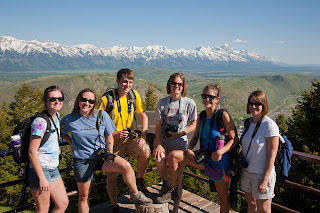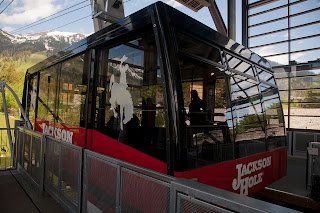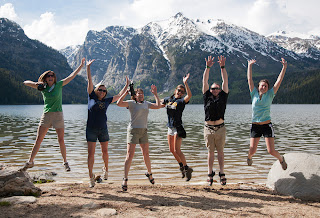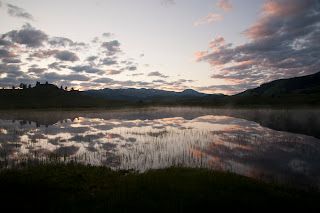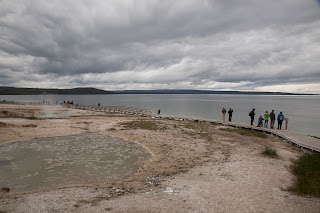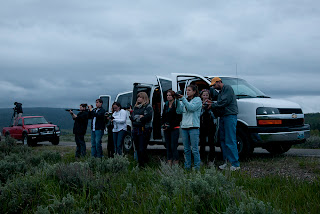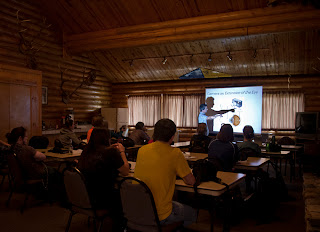
On our final full day of the 2011 workshop, I invited the students to go on an optional morning hike to the top of Snow King Mountain. To my surprise, many of them were eager to take on the challenge. The base of Snow King Mountain lies just a few blocks away from our cabins in the Cowboy Village Resort. We met at 8:00 AM and walked together from the cabins to the start of the trail. The trail winds steeply up the mountain for over two miles and 1,571 vertical feet. After the first 200 yards or so, several of the students questioned weather or not to continue. With a little encouragement and support, they fell into a rhythm and paced themselves to the top. Climbing to the top of Snow King is no easy feat, especially for folks not used to the high altitude. Your body and mind is deprived of oxygen with each agonizing step. I was very impressed with the group of students that made it to the top.
Fortunately, the view from above is well worth the effort. The town of Jackson lies below you with the visible boundaries of the National Elk Refuge to the north and the snow capped peaks of Grand Teton National Park. We took the long chairlift ride back down to the base of the mountain, savoring the views as we descended.
The rest of the day was spent in the Center for the Arts photo studio processing and editing final images. At 4:30 PM all the students had turned in their final images. We closed down the studio and headed to the Cowboy Village for our final evening together. At 6:00 PM we met in the Pavilion Room at the Cowboy Village for dinner and presentations. I ordered some delicious catered food from Bubba's Bar-BQ, and we all filled our plates. While we ate dinner, each student projected their top 20 images and discussed their ideas. The student presentations were really good. It was fun to see the various approaches to the places we visited and reflect on an action packed nine days.
After the presentations and dinner, we headed up to our favorite sunset spot out on the National Elk Refuge. The Curtis Canyon Overlook sits on a bald mountain above the valley affording excellent views of the Elk Refuge, Jackson Hole, and the jagged skyline of the Tetons beyond.
